1. Krolikowska M, Kataja M, Poyhia R, Drzewoski J, Hynynen M. Mortality in diabetic patients undergoing non-cardiac surgery: a 7-year follow-up study. Acta Anaesthesiol Scand. 2009; 53:749–58.

2. American Diabetes Association. Standards of medical care in diabetes--2011. Diabetes Care. 2011; 34 Suppl 1(Suppl 1):S11–61.
3. Biancari F, Giordano S. Glycated hemoglobin and the risk of sternal wound infection after adult cardiac surgery: a systematic review and meta-analysis. Semin Thorac Cardiovasc Surg. 2019; 31:465–7.

4. Chow A, Switzer NJ, Dang J, Shi X, de Gara C, Birch DW, et al. A systematic review and meta-analysis of outcomes for type 1 diabetes after bariatric surgery. J Obes. 2016; 2016:6170719.

5. Shohat N, Muhsen K, Gilat R, Rondon AJ, Chen AF, Parvizi J. Inadequate glycemic control is associated with increased surgical site infection in total joint arthroplasty: a systematic review and meta-analysis. J Arthroplasty. 2018; 33:2312–21.

6. Dhatariya K, Levy N, Kilvert A, Watson B, Cousins D, Flanagan D, et al. NHS Diabetes guideline for the perioperative management of the adult patient with diabetes. Diabet Med. 2012; 29:420–33.

7. Joshi GP, Chung F, Vann MA, Ahmad S, Gan TJ, Goulson DT, et al. Society for Ambulatory Anesthesia consensus statement on perioperative blood glucose management in diabetic patients undergoing ambulatory surgery. Anesth Analg. 2010; 111:1378–87.

10. Moher D, Shamseer L, Clarke M, Ghersi D, Liberati A, Petticrew M, et al. Preferred reporting items for systematic review and meta-analysis protocols (PRISMA-P) 2015 statement. Syst Rev. 2015; 4:1.

12. Wong JK, Ke Y, Ong YJ, Li HH, Abdullah HR. Impact of preoperative HbA1c on postoperative complications after elective major abdominal surgery: a systematic review protocol. BMJ Open. 2020; 10:e039422.

16. Dindo D, Demartines N, Clavien PA. Classification of surgical complications: a new proposal with evaluation in a cohort of 6336 patients and results of a survey. Ann Surg. 2004; 240:205–13.
17. Festejo Villamiel KM, Yao C, Sioson M. Enhanced recovery after surgery (ERAS) outcomes in patients with prior diagnosis of diabetes. J ASEAN Fed Endocr Soc. 2019; 34:73–9.

18. Gustafsson UO, Thorell A, Soop M, Ljungqvist O, Nygren J. Haemoglobin A1c as a predictor of postoperative hyperglycaemia and complications after major colorectal surgery. Br J Surg. 2009; 96:1358–64.
19. Okamura A, Watanabe M, Imamura Y, Kamiya S, Yamashita K, Kurogochi T, et al. Preoperative glycosylated hemoglobin levels predict anastomotic leak after esophagectomy with cervical esophagogastric anastomosis. World J Surg. 2017; 41:200–7.

20. Dai Z, Yang Y, Liu Y. Preoperative HbA1C and its effect on post operative complications in colorectal surgery patients. People’s Mil Surg. 2017; 60:875–8.
21. Chen S, Cha IR, Tu S, Wan Z, Chen B. Association of postoperative anastomotic leak with preoperative level of glycosylated hemoglobin in elderly patients with colorectal cancer and type 2 diabetes mellitus. Chin J Heal Lab Tec. 2018; 28:2632–5.
22. Wang Q, Cao W, Zhao Y. The correlations between intensive glucose lowering and the post-operative complications in the diabetic patients underwent curative surgery for gastrointestinal tumor. Pract J Cancer. 2010; 25:381–3.
23. Huang Y, Zheng H, Chen P, Yang J, Lin S, Liu T, et al. An elevated HbA1c level is associated with short-term adverse outcomes in patients with gastrointestinal cancer and type 2 diabetes mellitus. J Clin Med Res. 2017; 9:303–9.

24. Goodenough CJ, Liang MK, Nguyen MT, Nguyen DH, Holihan JL, Alawadi ZM, et al. Preoperative glycosylated hemoglobin and postoperative glucose together predict major complications after abdominal surgery. J Am Coll Surg. 2015; 221:854–61.

25. Goh SN, Yeoh E, Tan KY. Impact of perioperative hypoglycaemia in subjects with diabetes undergoing colorectal surgery. Int J Colorectal Dis. 2017; 32:209–14.

26. Kamarajah SK, Adlan A, Barmayehvar B, Sowida M, Reihill C, Ellahee P. Preoperative glycosylated haemoglobin (HbA1c) does impact on postoperative complications in patients undergoing gastrointestinal and hepatobiliary surgery. Asian J Anesthesiol. 2018; 56:83–91.
27. Sutton AJ, Abrams KR, Jones DR, Sheldon TA, Song F. Methods for meta-analysis in medical research. Chichester: John Wiley & Sons Ltd;2000.
29. Higgins JP, Thompson SG. Quantifying heterogeneity in a meta-analysis. Stat Med. 2002; 21:1539–58.

30. Hardy RJ, Thompson SG. Detecting and describing heterogeneity in meta-analysis. Stat Med. 1998; 17:841–56.

31. Lee H, Kwak C, Kim HH, Byun SS, Lee SE, Hong SK. Diabetes mellitus as an independent predictor of survival of patients surgically treated for renal cell carcinoma: a propensity score matching study. J Urol. 2015; 194:1554–60.

32. Zhang M. The effects of HbA1C in post operative complications of cholecystectomy. J Chang Med Coll. 2008; 22:427–8.
33. Jones CE, Graham LA, Morris MS, Richman JS, Hollis RH, Wahl TS, et al. Association between preoperative hemoglobin A1c levels, postoperative hyperglycemia, and readmissions following gastrointestinal surgery. JAMA Surg. 2017; 152:1031–8.

34. Zhou X, Zhang Z, Zhou B. Relationship between postoperative delirium and preoperative HbA1c level in elderly surgical patients. Jiangsu Med J. 2019; 45:1125.
35. Oh TK, Han S, Oh AY, Kim S, Ryu JH. Chronic hyperglycemia with elevated glycated hemoglobin level and its association with postoperative acute kidney injury after a major laparoscopic abdominal surgery in diabetes patients. J Anesth. 2018; 32:740–7.

36. Li YW, Lian P, Huang B, Zheng HT, Wang MH, Gu WL, et al. Very early colorectal anastomotic leakage within 5 post-operative days: a more severe subtype needs relaparatomy. Sci Rep. 2017; 7:39936.

37. Guo S, Dipietro LA. Factors affecting wound healing. J Dent Res. 2010; 89:219–29.

38. Brem H, Tomic-Canic M. Cellular and molecular basis of wound healing in diabetes. J Clin Invest. 2007; 117:1219–22.

39. Martin ET, Kaye KS, Knott C, Nguyen H, Santarossa M, Evans R, et al. Diabetes and risk of surgical site infection: a systematic review and meta-analysis. Infect Control Hosp Epidemiol. 2016; 37:88–99.

40. Kang S, Han H, Yoon KS. Preoperative HbA1c is a good marker for predicting wound complications after TKA in diabetics. Orthop Proc. 2018; 92-B:135.
41. Dronge AS, Perkal MF, Kancir S, Concato J, Aslan M, Rosenthal RA. Long-term glycemic control and postoperative infectious complications. Arch Surg. 2006; 141:375–80.

42. Wu JM, Ho TW, Yang CY, Lee PH, Tien YW. Changes in glucose metabolism after distal pancreatectomy: a nationwide database study. Oncotarget. 2018; 9:11100–8.

43. Smith EP, Polanco G, Yaqub A, Salehi M. Altered glucose metabolism after bariatric surgery: What’s GLP-1 got to do with it? Metabolism. 2018; 83:159–66.

44. Pomposelli JJ, Baxter JK 3rd, Babineau TJ, Pomfret EA, Driscoll DF, Forse RA, et al. Early postoperative glucose control predicts nosocomial infection rate in diabetic patients. JPEN J Parenter Enteral Nutr. 1998; 22:77–81.





 PDF
PDF Citation
Citation Print
Print



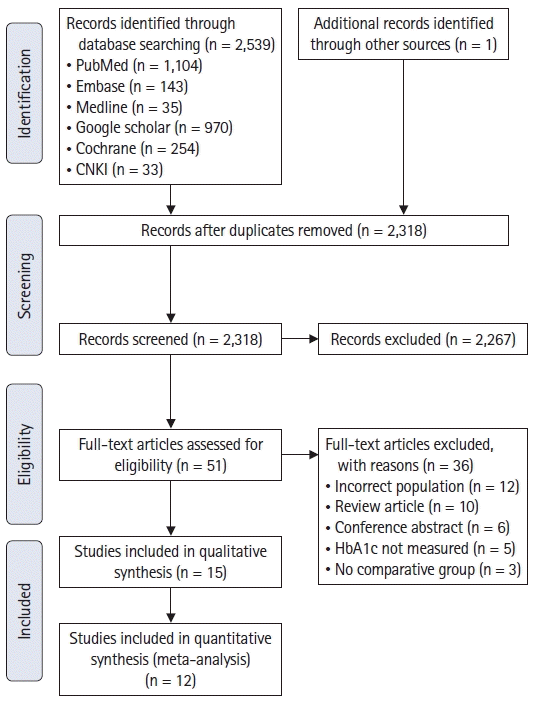
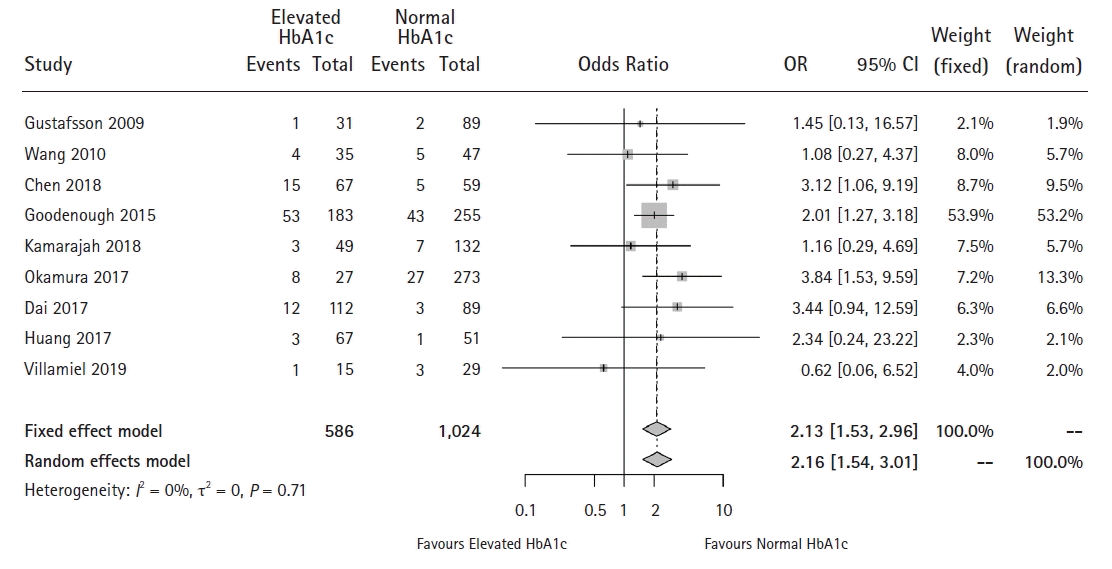
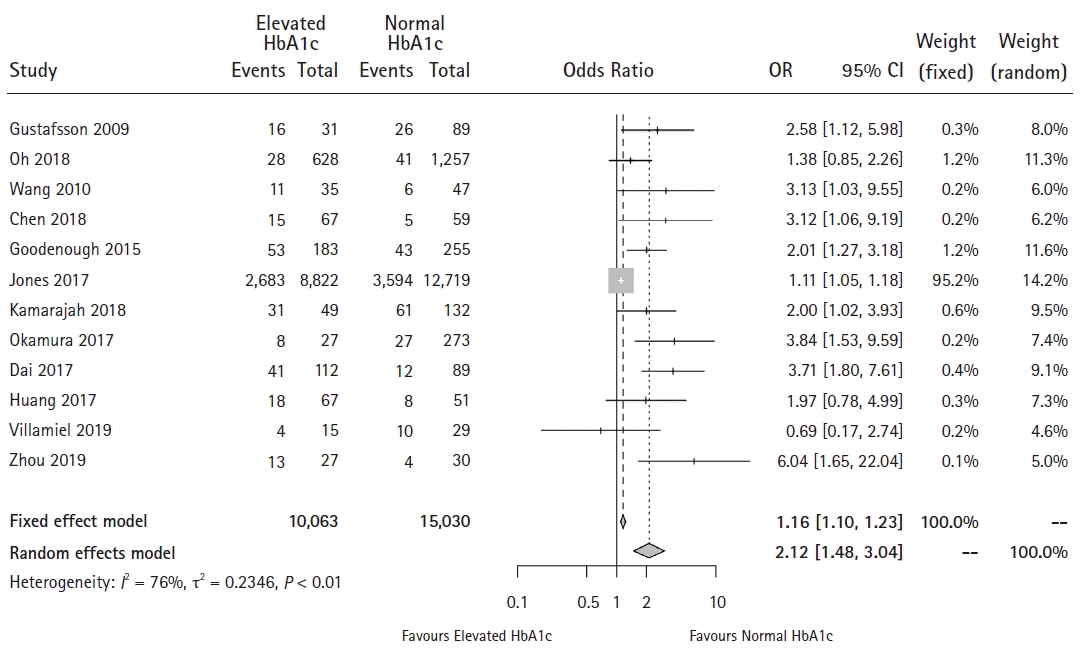
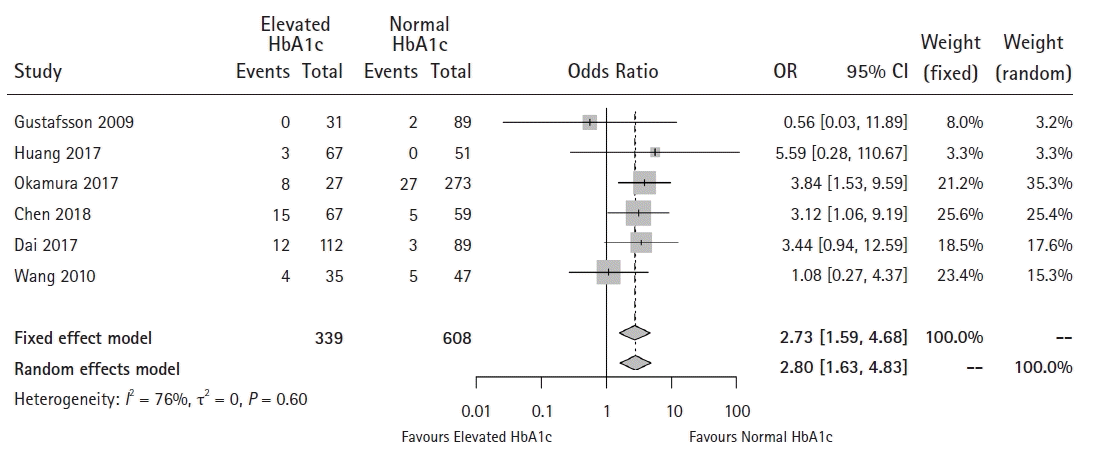
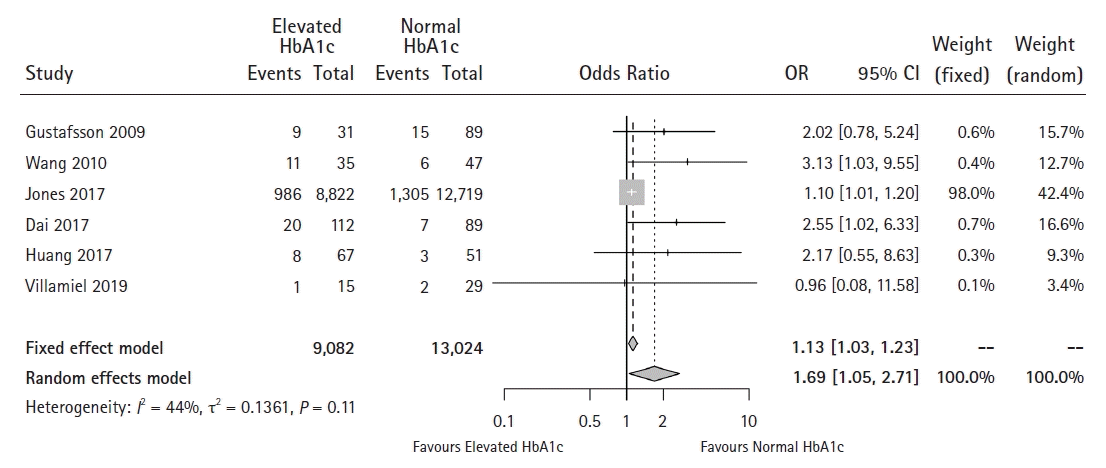

 XML Download
XML Download